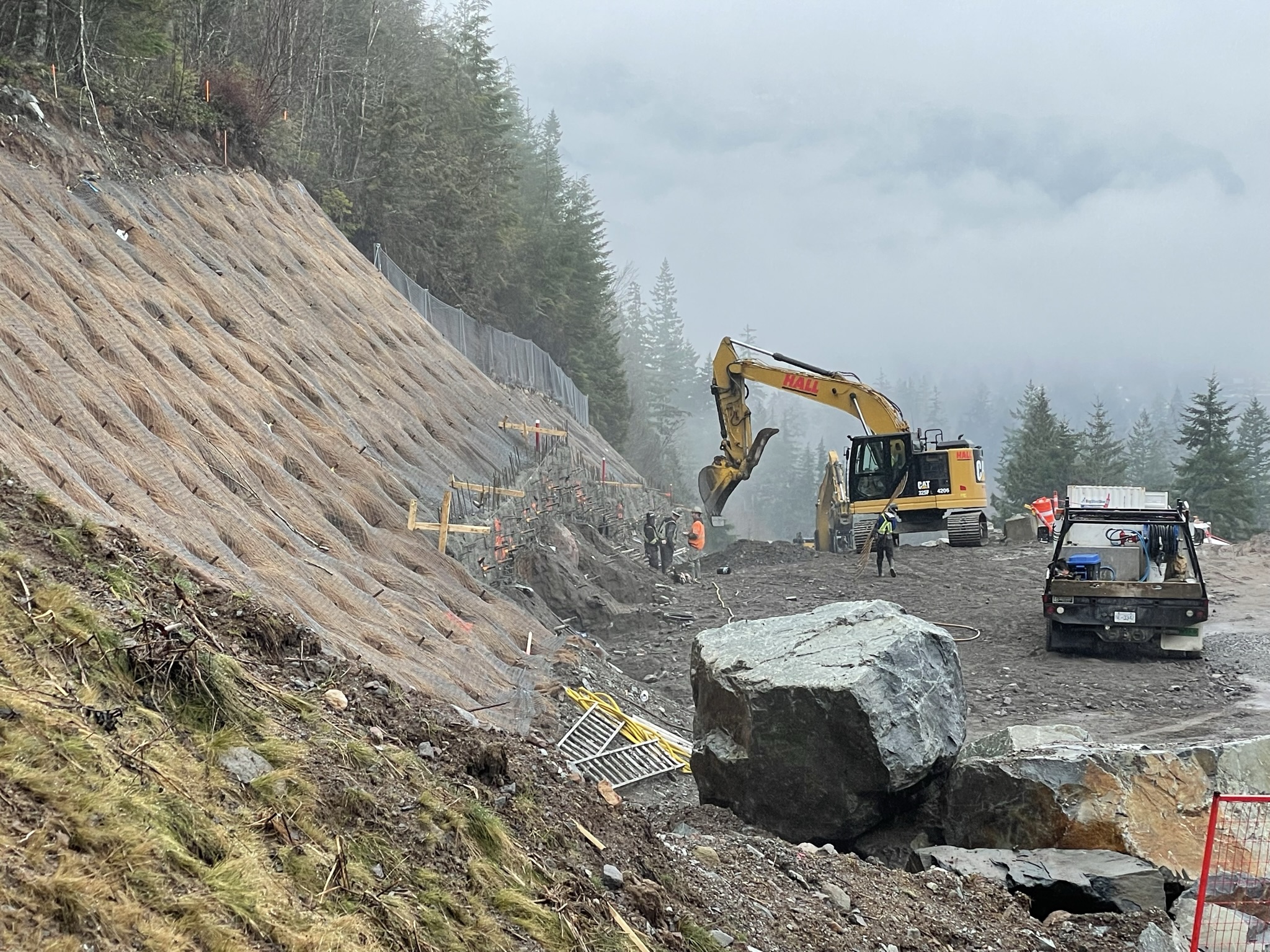ESC refers to “Erosion and Sediment Control”.
Sediment is the particulate matter that becomes waterborne when dislodged by the forces of erosion. Erosion is the physical removal of soil particles, usually by water or wind, though it can also be mobilized by vehicles and construction site equipment. Fine sediment is considered a deleterious substance under Section 36(3) of the Fisheries Act. Fine sediment can reduce vision for fish so they cannot feed, it can clog their gills, smother eggs, and cause stress and occasionally death to a fish. It can also fill in pools that are important for feeding and rearing, and change channel morphology.

Controlling sediment on a construction site is important ensure compliance with the Fisheries Act and protect fish and fish habitat. An Erosion and Sediment Control (ESC) plan may be required to obtain permits and approvals at all levels of government, especially for projects that are occurring near water.
Construction almost always results in landscape modification and removal of vegetation, resulting in the exposure of soils to erosion and potential release into watercourses as fine sediment. An ESC Plan will address the management of erosion and sediment during and after construction to ensure it does not enter water ways. ESC often applies both planning and on-the ground measures.
Examples of planning measures include:
- Site assessment – this identifies areas vulnerable to erosion and pathways for sediment to enter nearby watercourses. It also identifies opportunities to reduce risk, such as planning ingress and egress routes and managing steep slopes.
- Design – plan the development to fit with natural features on the site such as topography and drainage patterns
- Phasing- for large construction sites, phasing is an option to minimize the duration of time that soils are exposed to erosive forces.
- Timing- timing of construction near fish bearing water courses can help to avoid impacts to sensitive life stages of fish. Construction is often timed during a period of dry weather, and may be temporarily halted if heavy rainfall occurs.
Examples of on-the ground measures include:
- Covering stockpiles and other disturbed areas
- Mulching
- Interceptor ditches
- Grade control
- Sediment retention with ponds, silt fencing
- Site restoration with seeding, planting, and slope stabilization
These are only some examples of how erosion and sediment be managed; an effective ESC plan must fit the development, the risk and the site. Best manage Practices for ESC are available for many jurisdictions, and training is provided by several agencies across BC and Canada. Effective delivery of an ESC plan involves monitoring, maintenance and follow up by a Qualified Environmental Professional. LTE provides professional services to prepare and monitor the implementation of ESC plans and post construction restoration.
Useful Links:
Vancouver Island University Erosion and Sediment Control training:
Requirements and Best Management Practices for Making Changes In and About A Stream in British Columbia (WSA & WSR)







